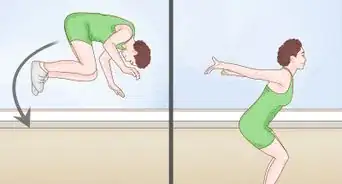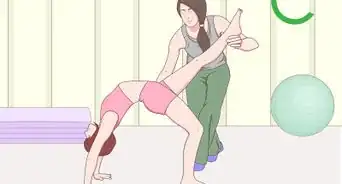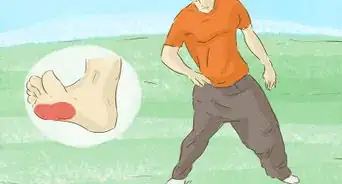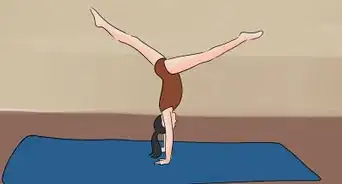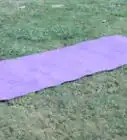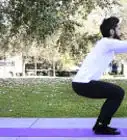wikiHow is a “wiki,” similar to Wikipedia, which means that many of our articles are co-written by multiple authors. To create this article, 20 people, some anonymous, worked to edit and improve it over time.
This article has been viewed 88,382 times.
Learn more...
Learning a standing back tuck is possible with good basic tumbling skills, the desire to practice to perfect your move, and a coach or spotter to be with you as you work. Make sure you have a strong back handspring technique before you begin. Try doing a high back handspring to get the feeling of a back tuck. Start on the trampoline to get your skills in place, particularly the high jump that is essential to the back tuck. After that, try the standing back tuck without jumping multiple times on the trampoline. Then move to the floor, adjust, and keep practicing.
Steps
Learning on the Trampoline
-
1Work on your technique on a trampoline. For many people learning a standing back tuck on a trampoline, and then transitioning to the floor is the best way to proceed. Since many people struggle with getting enough height to complete a standing back tuck, using a trampoline helps.
- You absolutely must have a spotter for any work you are doing on the trampoline.
-
2Do a back handspring on the trampoline. Make sure you give yourself plenty of room -- it takes 6–8 feet (1.8–2.4 m) of space to complete the move. If you have not mastered this, go no further. You cannot learn how to do a standing back tuck until you have a good back handspring technique. This move has you essentially throwing yourself backward, catching yourself on your hands, and then hurling yourself back onto your feet. It takes a lot of flexibility, strength, and timing to master.Advertisement
-
3Practice high back handsprings on the trampoline. One way to help get you higher is to do a bounce or two before you launch into the handspring. This will give you more bounce and start to mimic the height you are going to need for a back tuck.
-
4Try some high tucks on the trampoline. This will mean jumping high and pulling your legs close to, if not actually on your chest. Between the high tucks and the back handsprings, these two drills will give you the components you need to complete a successful back tuck on the trampoline.
Doing a Standing Back Tuck
-
1Use your spotter. To help you on a back tuck, a spotter needs to be standing on one side of you. Whichever side feels more natural to your spotter. He or she needs to stand with legs shoulder-width apart, and bent knees. They need to place one hand behind your thigh and the other in the middle of your back. They will help you throw your legs over and keep your back supported. They are there to help you not crash and get through the back tuck. Once you are more confident, he or she will take a less-active role and be there to help if something goes wrong.[1]
-
2Set yourself up as you would for a back handspring. Make sure your spotter is close in case you need help. Keep your feet together. Bend your knees. Keep your chest up and don’t bend your back.
-
3Commit to it. You need to be mentally ready and all in to do the back tuck. Know that you can do it. Have your spotter there if something goes wrong, but fully commit to the move both mentally and physically.
-
4Push off your toes. This is the way that you generate power in the back tuck, so the jump is the most important part. By pushing off your toes, you can extend the jump. The higher your set is the better. When you jump up for your set, never look at the ground!
-
5Make sure your arms are up. It helps your momentum on the jump and also helps to protect your neck. With your arms up and a straight body, you will start a slight rotation as your body flies upward.
-
6Keep your head up. Don’t throw your head back. You might even want to try with something under your chin to keep it in place -- like a pair of rolled-up socks. Most of the time, you need to be looking at your feet as they are moving through the air. Throwing your head back can throw off the timing and physics of the move.[2]
-
7Get to the top of your jump. Once you think that you've reached the highest point on your set, drive your knees up. Grab the bottom of your knees. Keep in mind that grabbing the knees is not the most important part of the jump -- you can even do a back tuck without getting your arms involved. Even when you are driving up your knees you should still be looking up so that you don't throw your head back.[3]
-
8Land on both feet. At first, it might be hard to land your back tuck, but as you continue it will get easier to stick the landing. Some of the first times, you might land on your knees. But keep practicing. When you land try not to step out too early which may cause injury to your ankles.
-
9Work on your technique. Have your coach watch your standing back tuck and offer suggestions. He or she will undoubtedly have some tips for you to incorporate. You need to have really good technique before you move to the floor.[4]
Moving to the Floor
-
1Deaden the trampoline. Think about putting a mat on the trampoline to make it somewhere between a trampoline and a floor. Put a tumbling mat on top of the trampoline and attempt a standing back tuck. Practice this way until you master it and are ready to move to the floor.
-
2Do some warm-up back handsprings on the floor. Take time to adjust from the trampoline. Ask your coach or spotter to help you make sure your handsprings look good. As you practice, work on making some of the high so that you can begin moving toward the back tuck.
-
3Practice some high tucks on the floor. Be aware of how different it feels compared to your work on the trampoline. Keep your jumps high and bring your knees up.
-
4Attempt a standing back tuck on the floor. Using the techniques you learned on the trampoline, set yourself, jump high, pull in those knees, and get both feet down. Have your coach offer suggestions. Doing a good standing back tuck can take hundreds of repetitions before you master it -- 400-500 times at a minimum.[5]
-
5Work with your spotter. Keep him or her in place until you feel very confident. He or she is there to help keep you from getting hurt.[6]
Community Q&A
-
QuestionCan I use a memory foam bed to try it?
 Community AnswerThese are very soft and squishy, so while it would help you to not get injured, it wouldn't allow for much height when you're jumping.
Community AnswerThese are very soft and squishy, so while it would help you to not get injured, it wouldn't allow for much height when you're jumping. -
QuestionHow do I get over the fear of the of a back tuck?
 Community AnswerTry doing it on a trampoline or on a mat with a spotter. Swing your arms back and the swinging motion will help give you momentum to lift your body into the air, keep your eyes focused forward for as long as you can and then tuck your legs. End with your legs bent and extend your arms. It takes practice, but you will be able to do it.
Community AnswerTry doing it on a trampoline or on a mat with a spotter. Swing your arms back and the swinging motion will help give you momentum to lift your body into the air, keep your eyes focused forward for as long as you can and then tuck your legs. End with your legs bent and extend your arms. It takes practice, but you will be able to do it. -
QuestionI have lost the fear of going back into a back tuck, but how do I take my hands off?
 Community AnswerKeep on going higher and higher in your handspring until you eventually do it without your hands. Try it off a roundoff for more power.
Community AnswerKeep on going higher and higher in your handspring until you eventually do it without your hands. Try it off a roundoff for more power.
References
- ↑ http://trickstutorials.com/index.php?page=content/t_backflip
- ↑ http://www.coachwayne.com/tumblingtips0035.html
- ↑ http://www.coachwayne.com/tumblingtips0035.html
- ↑ http://swingbig.org/drills-for-back-tucks/
- ↑ http://www.coachwayne.com/tumblingtips0035.html
- ↑ http://trickstutorials.com/index.php?page=content/t_backflip
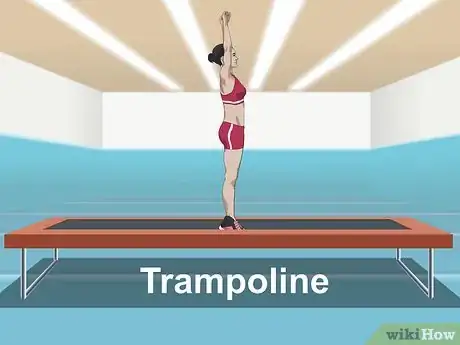
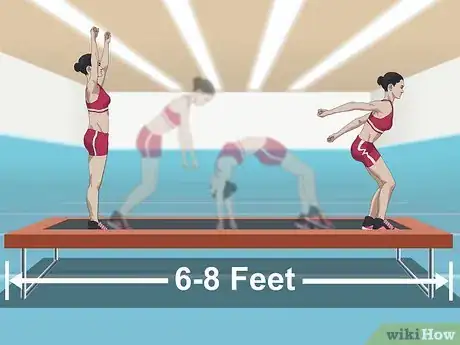
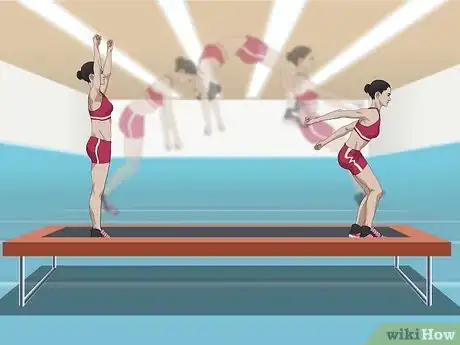

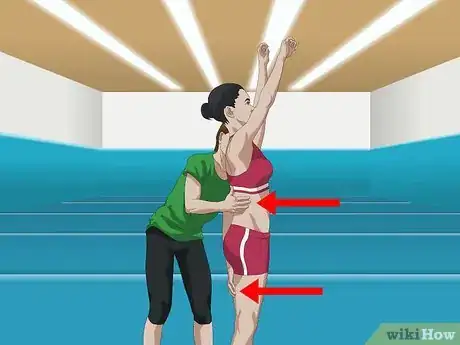

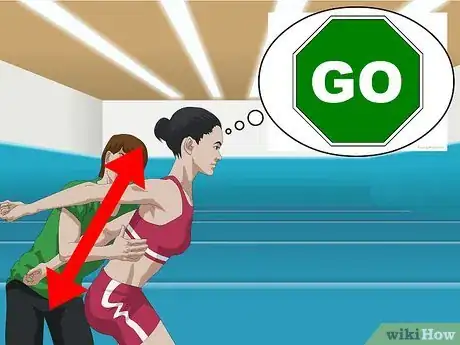
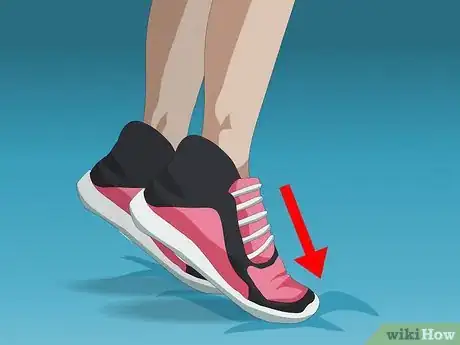
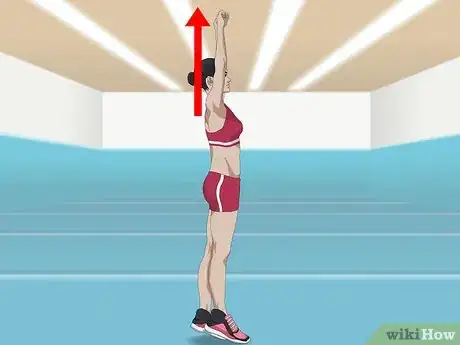
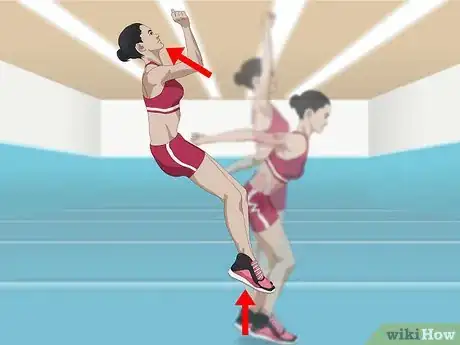
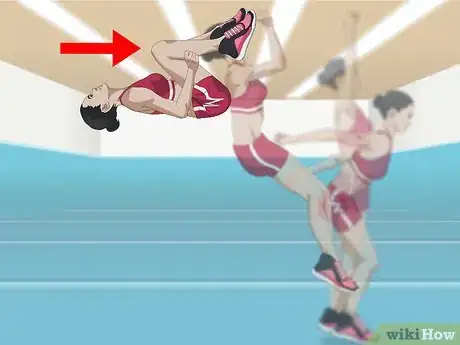

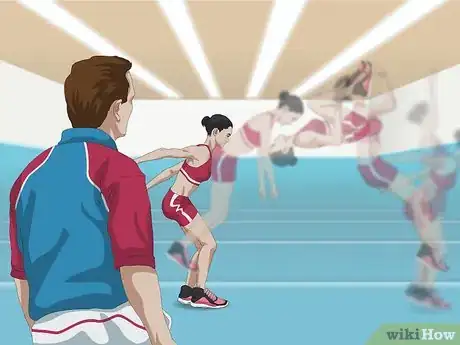

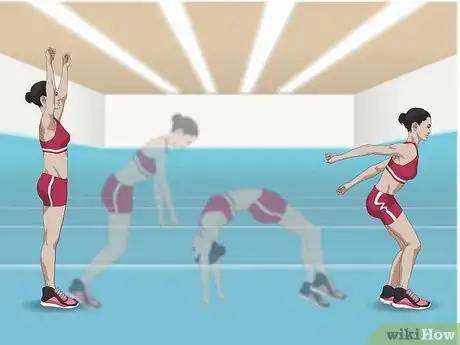
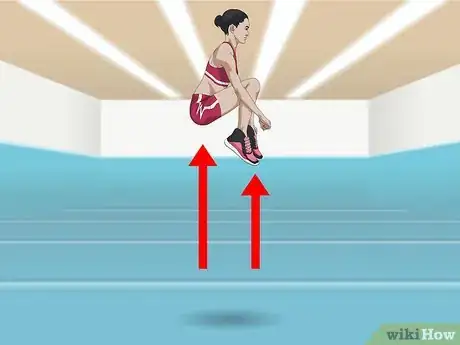
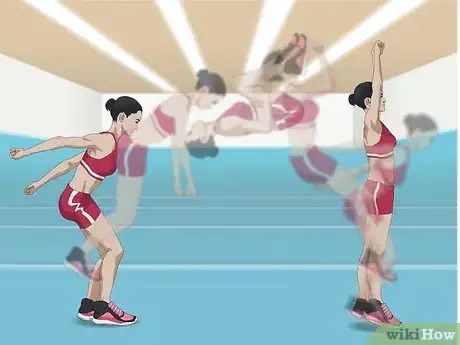
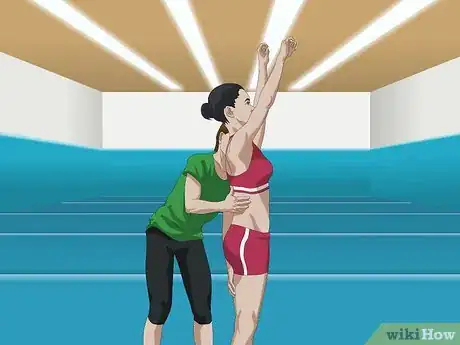


-Step-14-Version-2.webp)


